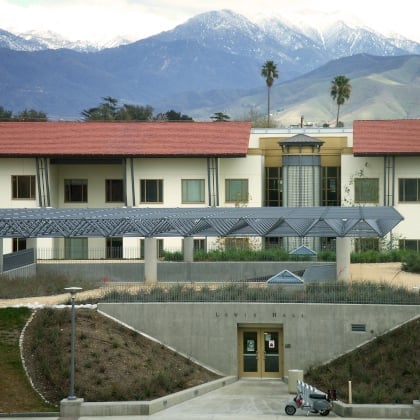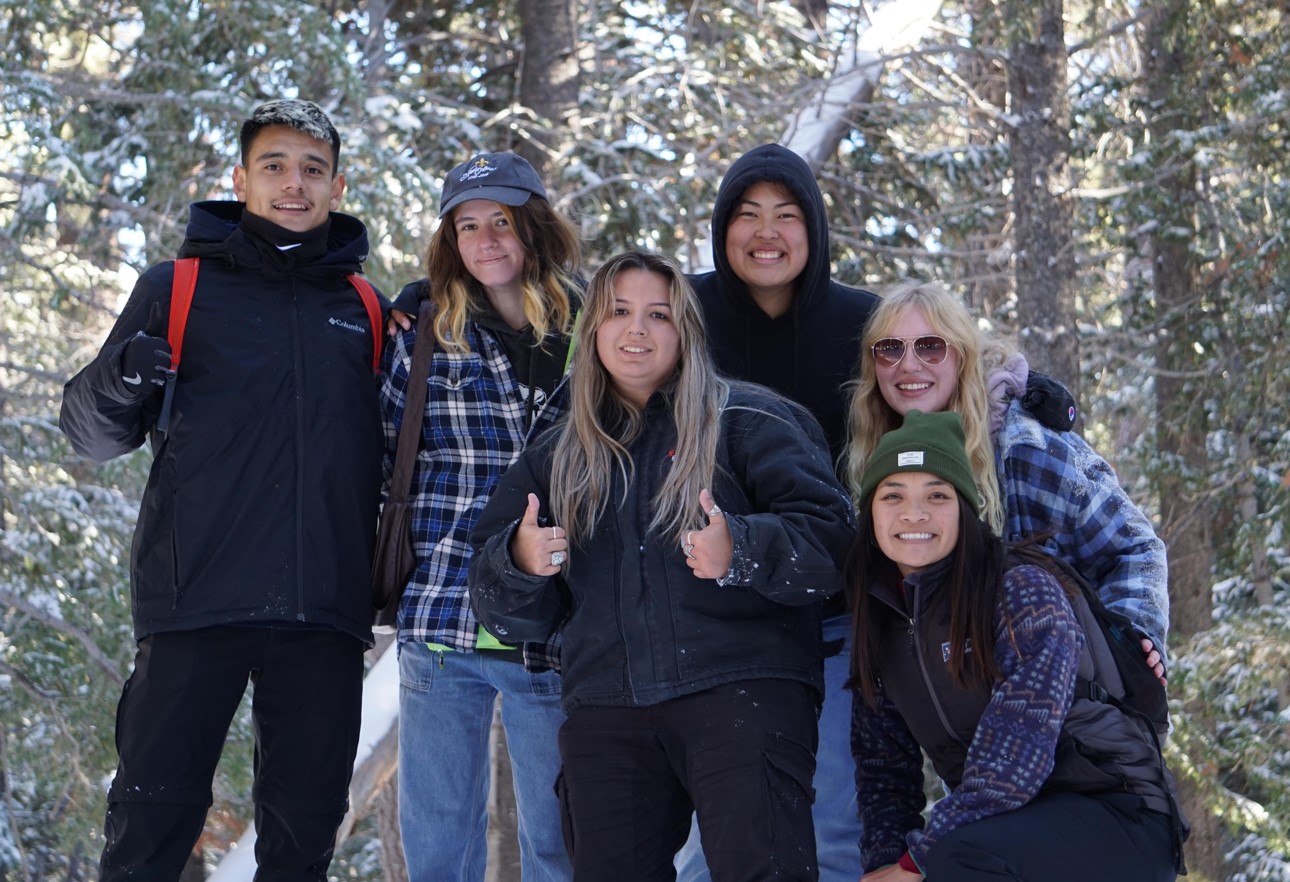Find us on campus

Lewis Hall


Our students consistently engage in a wide range of learning and research opportunities outside the traditional classroom setting. These experiences include lab-based courses, travel courses, as well as both collaborative and independent research projects. Through these diverse opportunities, students in our program acquire valuable, hands-on experience that enhances their understanding of the natural and social environmental sciences, preparing them for real-world challenges and future academic or professional pursuits.

Lewis Hall
Field-based learning offers students hands-on experience in data collection, analysis, and ecological observation, enhancing their understanding of environmental processes. Explore the following opportunities from the Environmental Studies department:
• Hydrology with Hillary Jenkins at the Devil's Punchbowl
• Geology with Hillary Jenkins at 7 Oaks Dam
• California Plants with Dr. Tim Kranz at the California Plants Lab - Spring 2022
• Bearpaw Preserve with Dr. Wendy McIntyre at the Bearpaw Preserve
Check out this ArcGIS StoryMap for detailed maps and videos of the Ecological Succession in the Bearpaw Reserve!
At the 2021 Conference for the Association for Environmental Studies and Sciences (AESS), our research team presented findings from a literature review of recent studies that explored recent energy transitions, which is most simply defined as shifting from one energy source to another and associated issues of "justice," which is the consideration of how the costs and benefits of energy systems are and should be distributed across populations and who should be included in decision-making.
Faculty: Dr. Valerie Rountree
Increasing resource scarcity alongside population growth and ever-growing demand for cheap energy creates important challenges for climate change mitigation. Energy justice—the consideration of how impacts from energy systems and decisions are distributed across populations—is increasingly viewed as a critical component of decarbonization policies and plans to ensure that low-income and minority communities are neither disproportionately harmed by clean energy projects nor excluded from related discussions. However, much of the literature on just transitions and energy justice are primarily conceptual and theoretical, drawing from diverse fields such as environmental ethics, law, and policy to inform decarbonization strategies. Empirical research in just transitions has received much less attention thus far in the literature. In this presentation, we will present the current state of empirical research on just transitions and energy justice in the U.S. and discuss key gaps and future research needs. Finally, we will present a brief research agenda for empirically evaluating the “justness” of California’s energy transition in the wake of its 100% clean energy goal as stated in SB 100, California’s updated Renewable Portfolio Standard.
Beginning in spring 2021, we began an in-depth literature review to determine the likely emissions (in carbon dioxide equivalent) from maintaining turfgrass, which includes emissions from mowing, fertilizing, and irrigating grasses. We also developed a methodology for a spatial analysis of turfgrass by type using Redlands, CA as our pilot area. Over the past year, we've expanded this project to calculate emissions from turfgrass maintenance in Los Angeles County.
Faculty: Dr. Valerie Rountree
Anthropogenic greenhouse gas emissions are rapidly changing global climate, leading to increased global average temperature, changes in precipitation patterns, rising sea level, and increased frequency and severity of extreme weather events. The maintenance of turfgrass, including fertilizing, irrigation, and mowing, is an under-recognized source of greenhouse gas (GHG) emissions, particularly nitrous oxide, carbon oxides, hydrocarbons, and volatile organic compounds. In addition to atmospheric warming, these gases also contribute to poor local air quality. The state of California has ambitious policies to reduce greenhouse gas emissions and improve local air quality, however, southern California continues to be one of the most polluted regions in the world; moreover, it is an arid and water-stressed area. Therefore, reducing air pollution is necessary to meet state and federal air quality standards and meet state emissions reductions targets. In this pilot study, we use published estimates of GHG CO2 emissions and an original GIS analysis to estimate the GHG emissions associated with maintaining turf - including watering, fertilizing, and mowing - in Redlands, CA. We discuss potential opportunities for reducing emissions through local and state policies and programs.